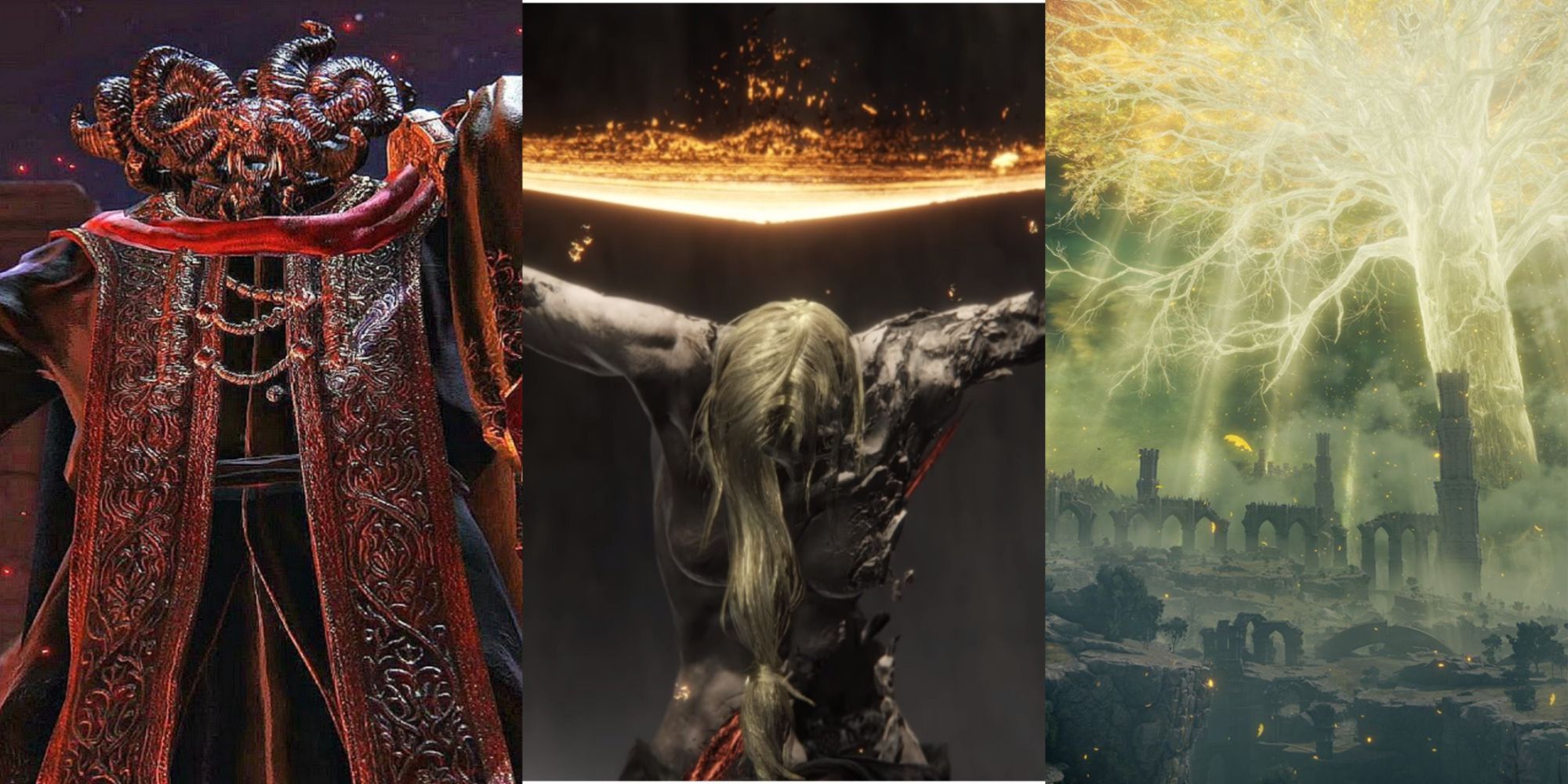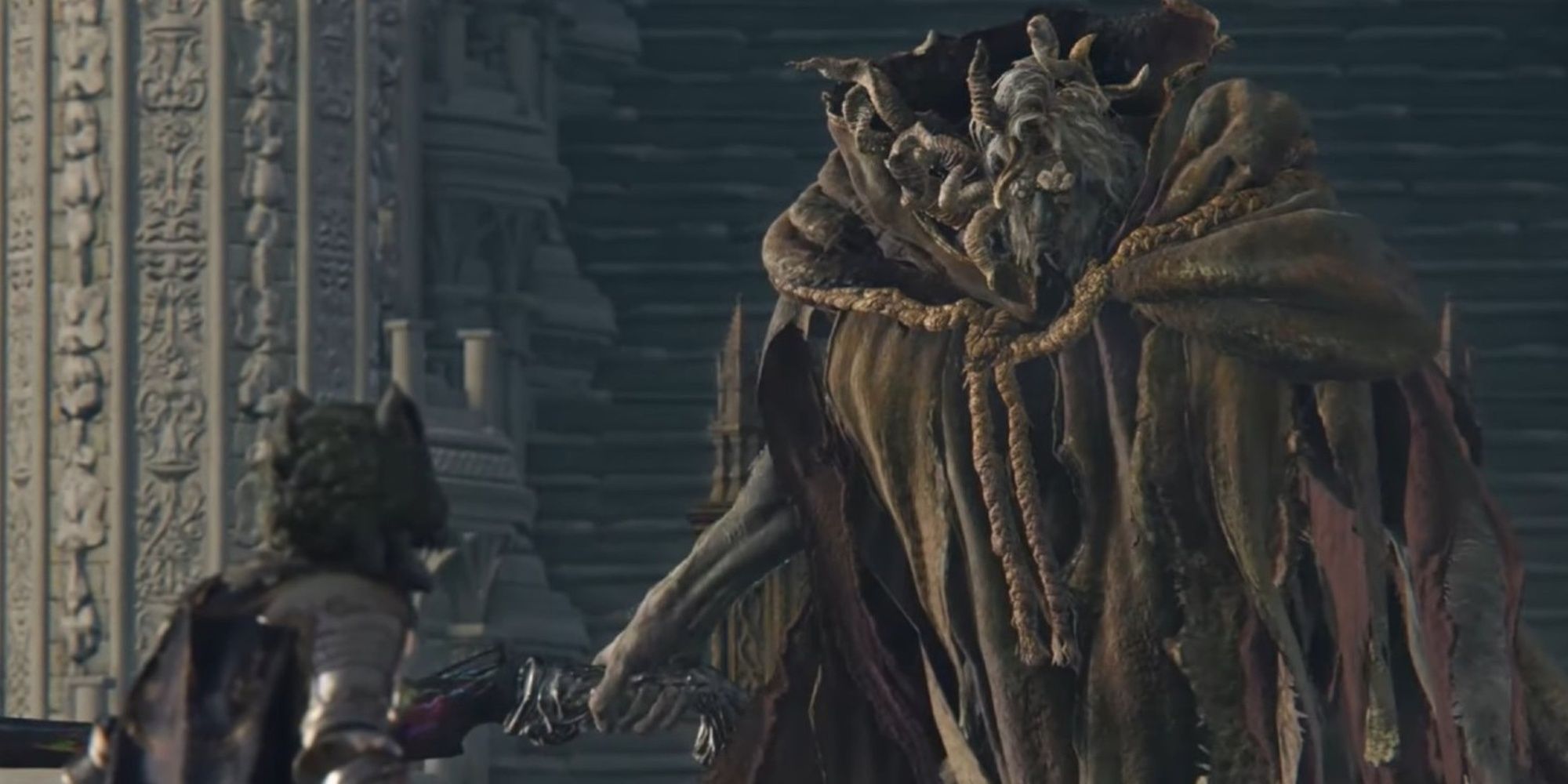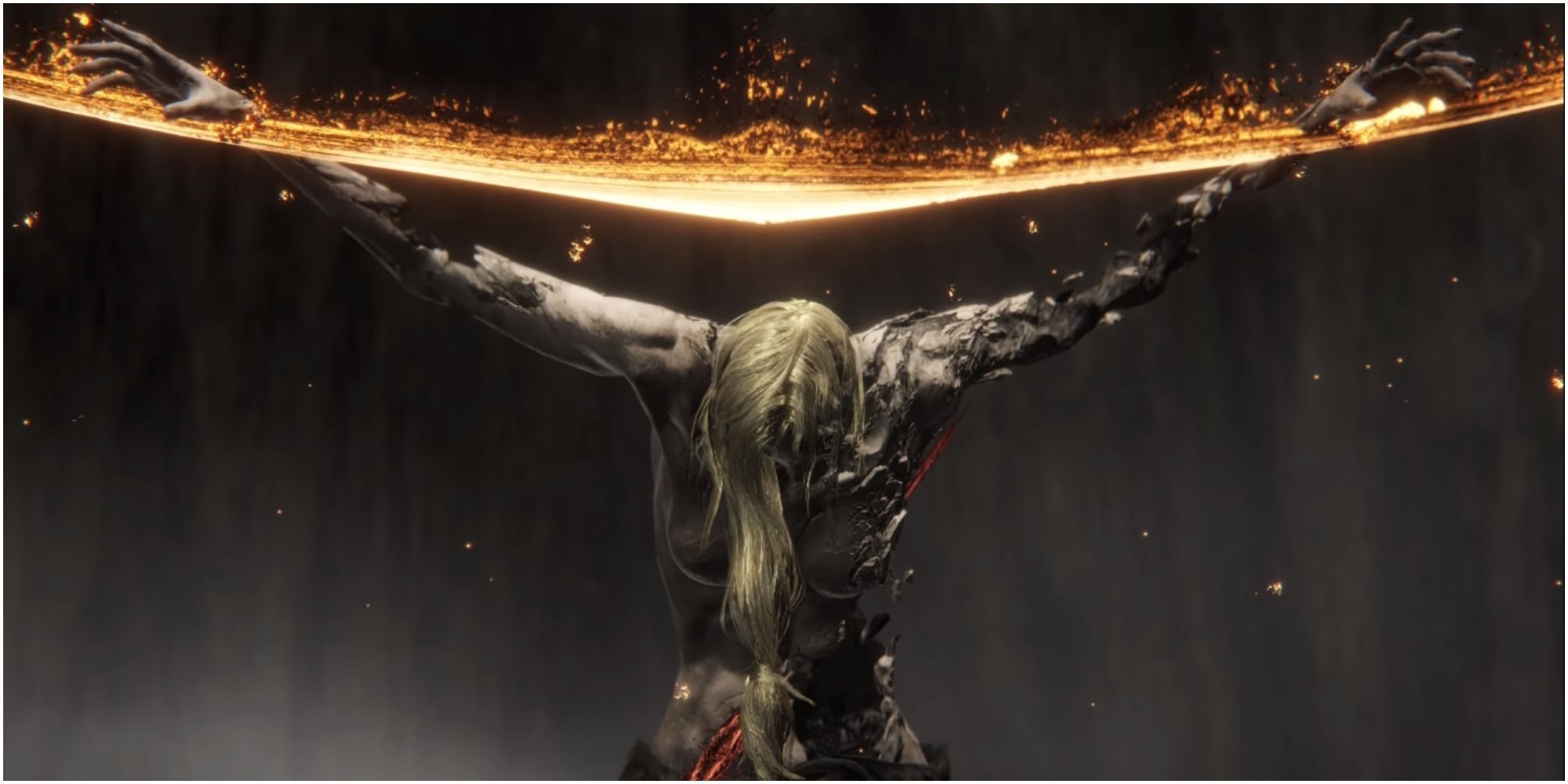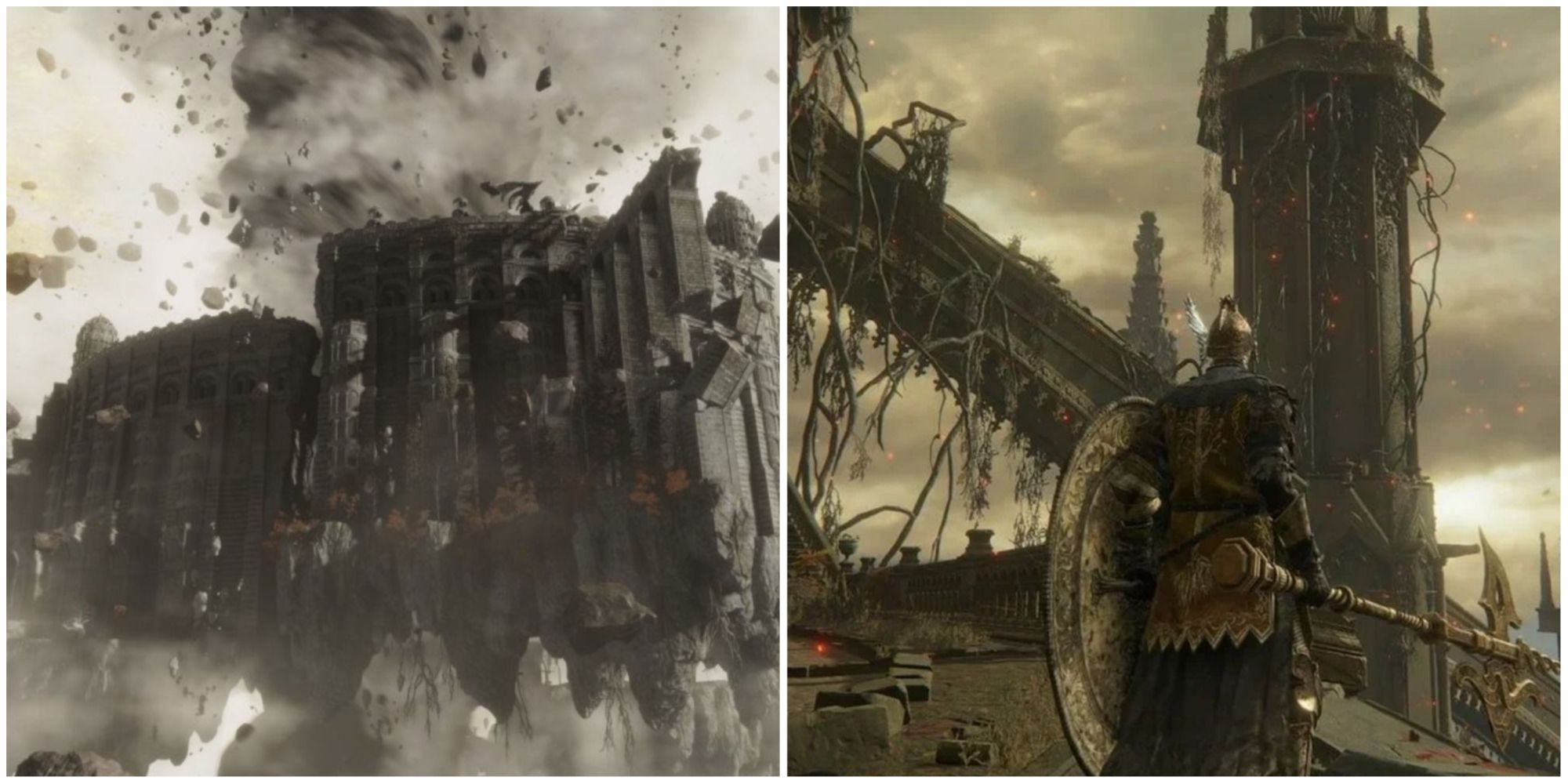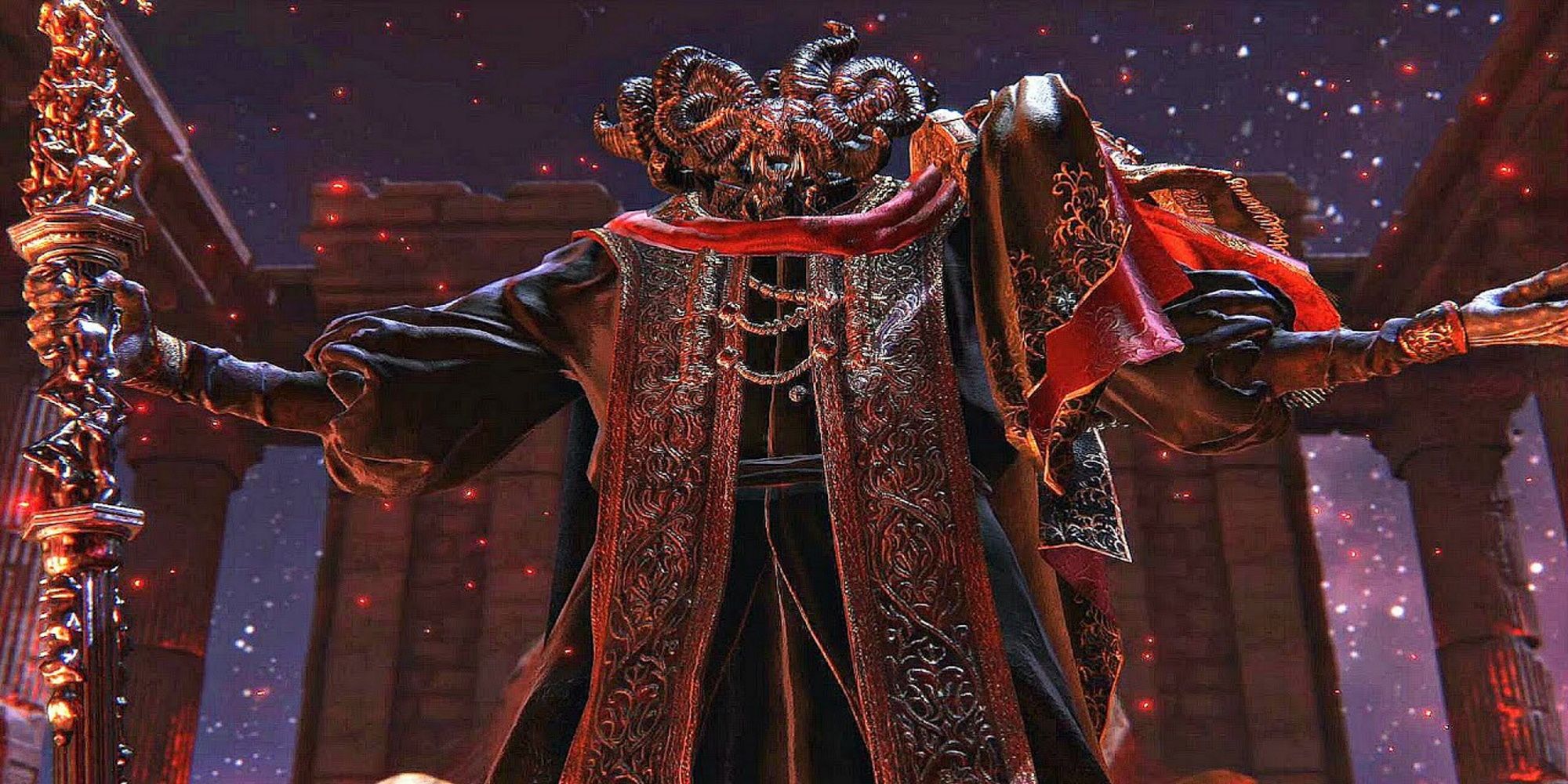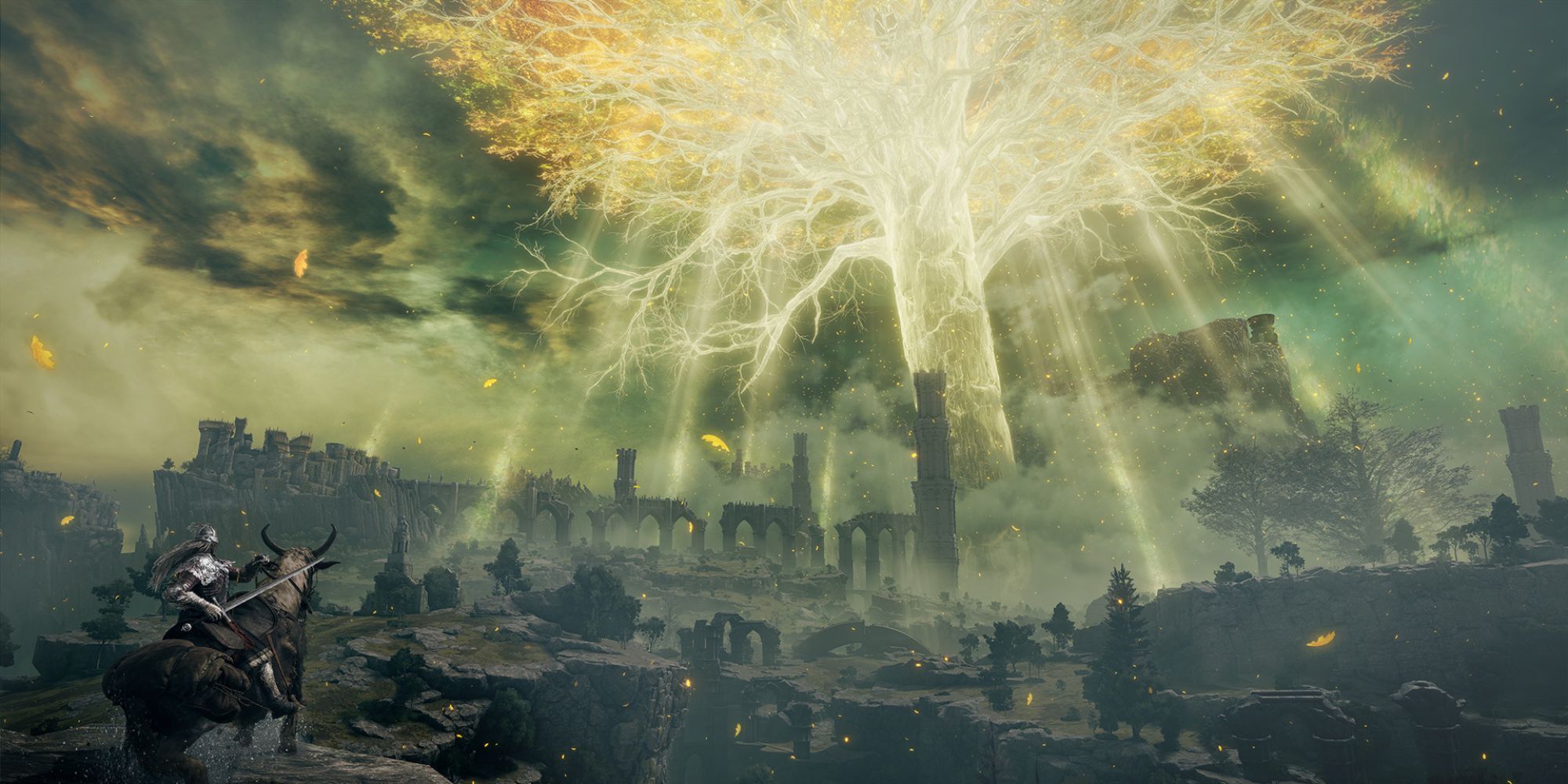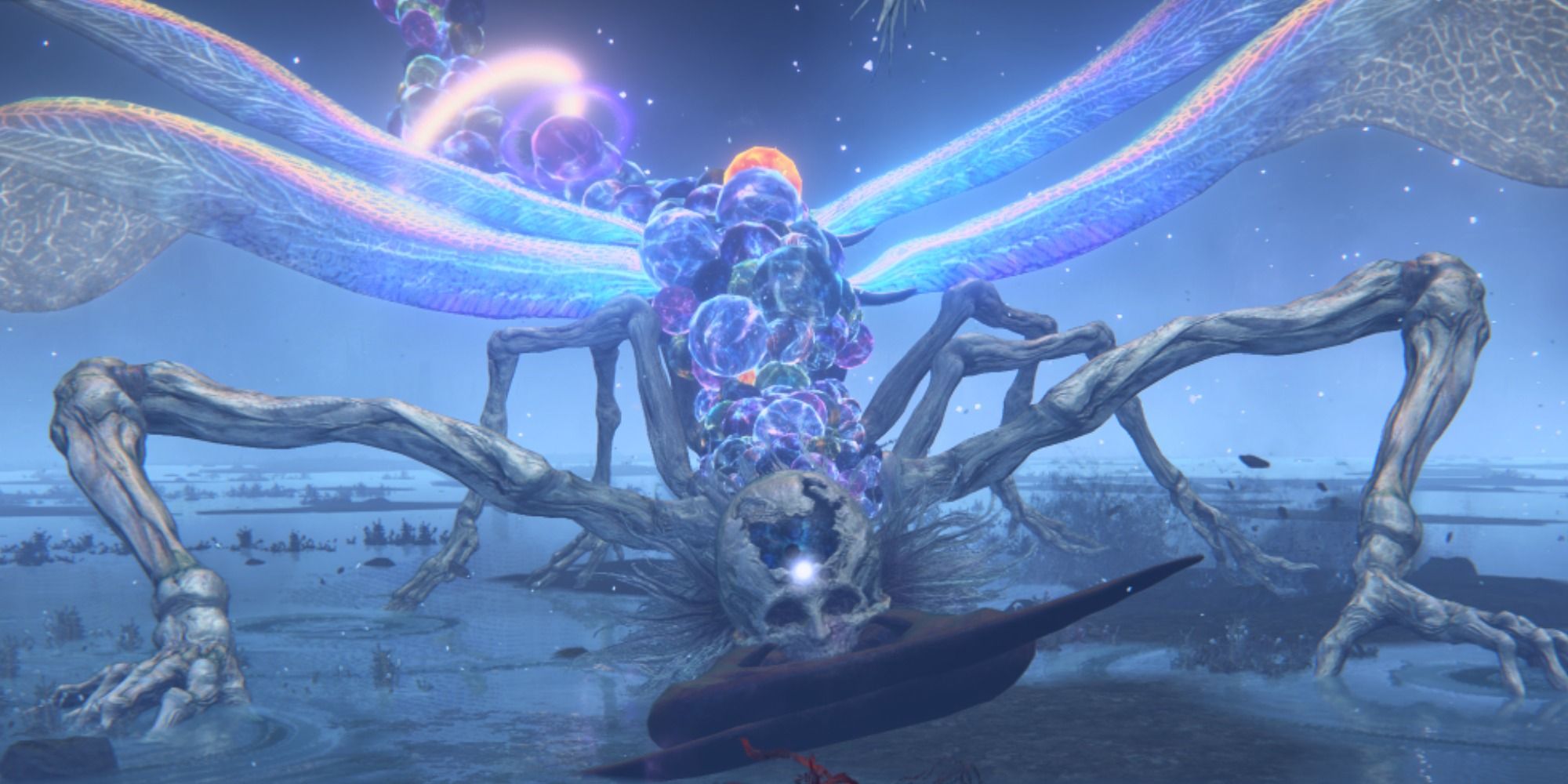Quick Links
FromSoftware has always been noted for its world-building. Even their earlier games had such specific atmospheres, though Demon's Souls birthed their more unique means of exploring it. Items and their descriptions, what enemies exist and where, what items you find in various locations, who drops them, and so on — very little is directly told, though plenty of it can be seen.
Elden Ring brings about an interesting change, in that the mythos of the world was not built exclusively by them, but with assistance from Game of Thrones scribe George R.R. Martin. The specific details of it all are vague, though undeniably he had a role to play in the Outer Gods, a pivotal part of the lore and ongoing story. But what exactly are Outer Gods? Are they simply a force of nature, an alien lifeform, something native to this land, or something else entirely?
A Brief History Of The Lands Between
To fully understand Outer Gods, it's first important to understand where and how they have taken root in The Lands Between. The area in which Elden Ring takes place is a sprawling landmass, though as the name may imply, only a portion of the whole world. Other nations are mentioned in the game, such as The Land Of Reeds, Eochaid, and others. As such, The Lands Between can be viewed as a center point of the world. It does not strictly belong to anyone, yet also is a meeting point for everyone.
Much of the lore in Elden Ring is taught through the tainted lens of The Golden Order, a religious organisation in service of Marika and The Greater Will. That said, at the corners of the world, above and below and in the edges you aren't meant to see, is a fuller history.
Prior to the arrival of The Greater Will, The Lands Between were home to the Primordial Crucible, a land where the strong flourished in eternal combat. Much of this later became a sport, as evidenced by the various colosseums across the world and the Crucible Knights. In truth, however, Omens seem to have been some of the original denizens of The Lands Between at this time. Much of this may explain why they are so heavily shunned by The Golden Order.
Eventually, The Greater Will finds its way to The Lands Between and makes communion with Marika, making her a god and giving them dominion over the land. From here, Death became an essential part of life, with each passing soul buried by the roots of the Erdtree so The Greater Will could absorb their essence into itself. The Erdtree then became a symbol of The Greater Will, and of The Lands Between as a whole. Though this does not fully explain Outer Gods, it gives an idea as to their influence, and the impact they have had on The Lands Between and its denizens.
The Importance Of Gods, Demigods, And Empyreans
Queen Marika the Eternal, God of the Lands Between, is preached of with perpetual reverence throughout the game. The definition of 'god' here is vague, as it is known that Marika possesses no true power without The Greater Will, yet through being their vessel is granted god-like powers. As such, she is a deific figure throughout The Lands Between, and one of the central figures of The Golden Order's religious beliefs.
That said, all children of Marika are deemed to be demigods. This title seems to have a clearer definition in its bestowal, though with very little true power associated with it. And yet, Radahn and Ranni were not born to Marika, but instead to Radagon and Rennala. Upon Radagon's marriage to Marika, they became demigods, thus making it more of a ceremonial title. Again, all of this is only because Marika is a vessel of The Greater Will.
Select people of The Lands Between are also Empyreans. These people have the unique power to commune with Outer Gods and serve as their vessels. It is not known if Empyreans are simply born as such, or if they can be chosen to become Empyreans by an Outer God. For example, Ranni is an Empyrean, while her brother Radahn is not. Yet it cannot strictly be because of the Outer Gods, because Marika was an Empyrean before The Greater Will came to The Lands Between. What this definitively confirms, however, is that Outer Gods need vessels to enact their influence upon a land.
The Connections Between The Haligtree And Farum Azula
A key detail revealed quite a ways into the story is the revelation that Marika and Radagon are one and the same. This is theorised as a means for Marika to have a form that could traverse the world outside the Erdtree, where she carried the Elden Ring. This alters the perspective of much of the story, though makes clearer the oddities that occur with Malenia and Miquella. Born as children to Marika and Radagon, this unfortunate union gave birth to two Empyrean demigods who could easily, and seemingly accidentally commune with and become the vessels of Outer Gods.
For Malenia, this caused her to commune with an Outer God of Scarlet Rot, something we'll dig into a bit later. For Miquella, they were afflicted with eternal youth, never rising from their short stature. That said, he dedicated his time to fixing their condition, and removing Outer Gods entirely. For one, Miquella grew his own great tree in the Haligtree, a home on the edges of The Lands Between where he and other outcasts could spend their time in peace.
It is here that you face Malenia in the game, and acquire Miquella's Needle. Much like how a similar needle was associated with the Scarlet Rot that afflicted Millicent, Miquella's Needle was used to hold back the Scarlet Rot that blighted Malenia, though he never got the chance to finish it. Yet even still, the Needle has power, curing your own character of the influence of the Frenzied Flame when used in Farum Azula.
Farum Azula is a place with a limited history, quite literally lost to the annals of time. It is a land suspended in the air in a pocket of existence beyond time. Here, the ancient dragons that once roamed The Lands Between take dominion, aided by their faithful Beastmen. Outer Gods seem to have no power here for some reason, making it an ideal location for Miquella to have practiced his work.
Known Outer Gods
So far, we've mainly focused on The Greater Will, though briefly acknowledged the existence of other Outer Gods in The Lands Between as well. The Greater Will has the most power at present, using Marika as a willing vessel until her shattering of the Elden Ring, though her own internal conflict caused her to be imprisoned here as well. This is just one, however.
Another prominent Outer God is the Goddess of Scarlet Rot. Though frequently seen as using Malenia as a vessel, there is evidence they have existed here for even longer. Deep beneath the ground, one can find the Lake of Rot, and various Kindreds of Rot. The knives they drop mention this Goddess of Rot, and their long history of spreading their Rot. Malenia is just the latest victim, having unknowingly become their vessel.
There is also the Frenzied Flame. Though praised only in fringe regions, it was originally summoned by the travelling merchants after they were trapped below Leyndell for blasphemy. It has no concrete goal beyond pure chaos, and has light connections with the Greater Will, passing on its influence through Three Fingers, rather than the Two Fingers of The Greater Will. The Frenzied Flame has no known Empyrean vessel, meaning it somehow does not need one or is a byproduct of The Greater Will.
The next most prominent would be the Formless Mother. They are shrouded in mystery, summoned by Mohg in order to create his own dynasty following The Shattering. That said, they have never been given a proper communion, after their failure to use Miquella as a vessel. They are focused on blood — constant bloodshed is the only thing that brings them satisfaction.
There are many more figures that exist that may be Outer Gods, such as The God of Fire beloved by the Fire Giants, and the God Devouring Serpent of Mt. Gelmir that has their own ancient magic and may even be native to The Lands Between. Some come in more concrete forms, while others seem to bestow their powers from beyond. What is clear is that only with a vessel do they have the means to alter the world en masse.
Some of these other figures don't strictly fit into the established rules of Outer Gods and the need for an Empyrean vessel, but exude a similar presence and so are worthy of mentioning.
The Erdtree As A Manifestion Of Outer Gods
The Lands Between is one filled with symbolism. The Erdtree itself is a very prominent symbol of the Golden Order and the ruling of The Greater Will. That said, the Erdtree is not solid in its form. Even at its base it is rotten, corrupted by the loss of the Rune of Death — making it unable to truly absorb lost lives. Furthermore, other endings show that the Erdtee can change in form to match the rune that mends the Elden Ring.
This is important to note as it shows that Outer Gods, even without a physical presence, have the power to physically alter the land. Repairing the Elden Ring leaves The Greater Will in power, though alters the power they output. The Erdtree may be more corrupted, lacking in leaves, and even alight with the Frenzied Flame. This is an interesting dichotomy as The Greater Will maintains influence, yet has had its own vision corrupted.
Most interesting is Ranni's ending. As an Empyrean, she has the means to remove The Greater Will, and does so, replacing it with the dark chill of the moon. Here, the Erdtree is seemingly removed entirely, dramatically altering The Lands Between. In fact, the Erdtree is even mentioned as The Great Tree during mentions of the Primordial Crucible. As such, it can be inferred that this Great Tree, be it the Erdtree of The Greater Will or a manifestation of another Outer God, is a symbol that resonates across The Lands Between that signal who is in power.
Phenomena Of Outer Gods
Much of what is presented to the player directly is The Lands Between as presented by the Golden Order. The luminous glow of the Erdtree, the cycle of death (though now corrupted by the theft of the Rune of Death), and so on. Though no other Outer God has full control without a vessel like Marika and a symbol like the Elden Ring and the Erdtree, their presence can still be felt.
The Scarlet Goddess has wreaked havoc with destruction across Caelid through Malenia. The Fire Giants host the very means to burn the Erdtree. The Darkmoon of Ranni (and also praised by Rennala) offers a view to the Cosmos, one that Radahn threatens by stopping the stars. Yet all these phenomena summon other beings. These include creatures of the Void (such as Astel), Fallingstar Beasts that fell like meteors, and even Onyx and the Alabaster Lords. practitioners of Gravity Magic. They are not directly associated with Outer Gods, but seem drawn to The Lands Between because of them.
Conversely, it could be argued that the extensive study of the stars was what summoned these beings, and the Outer Gods followed.

